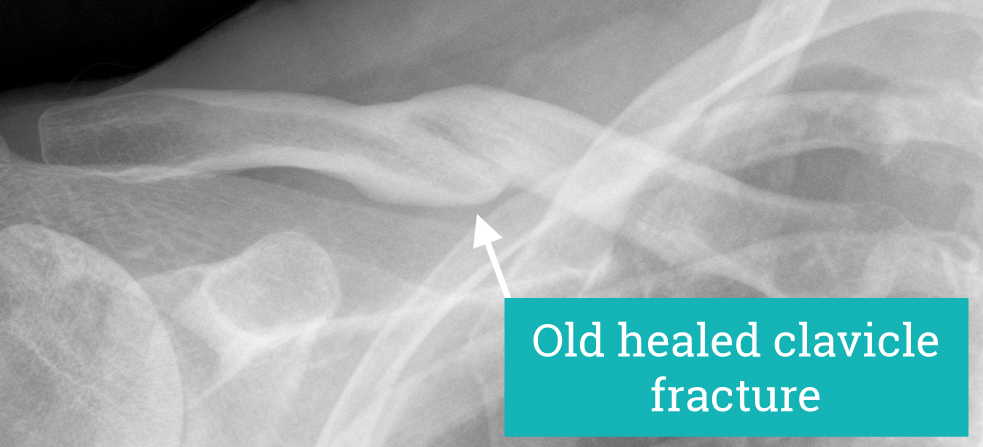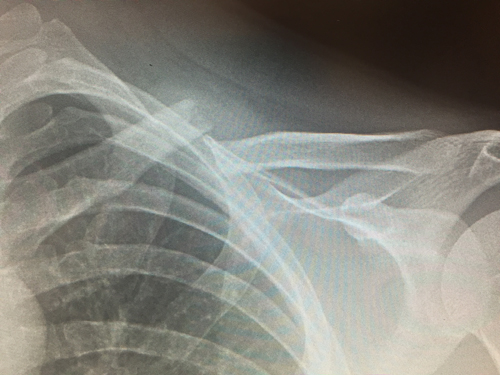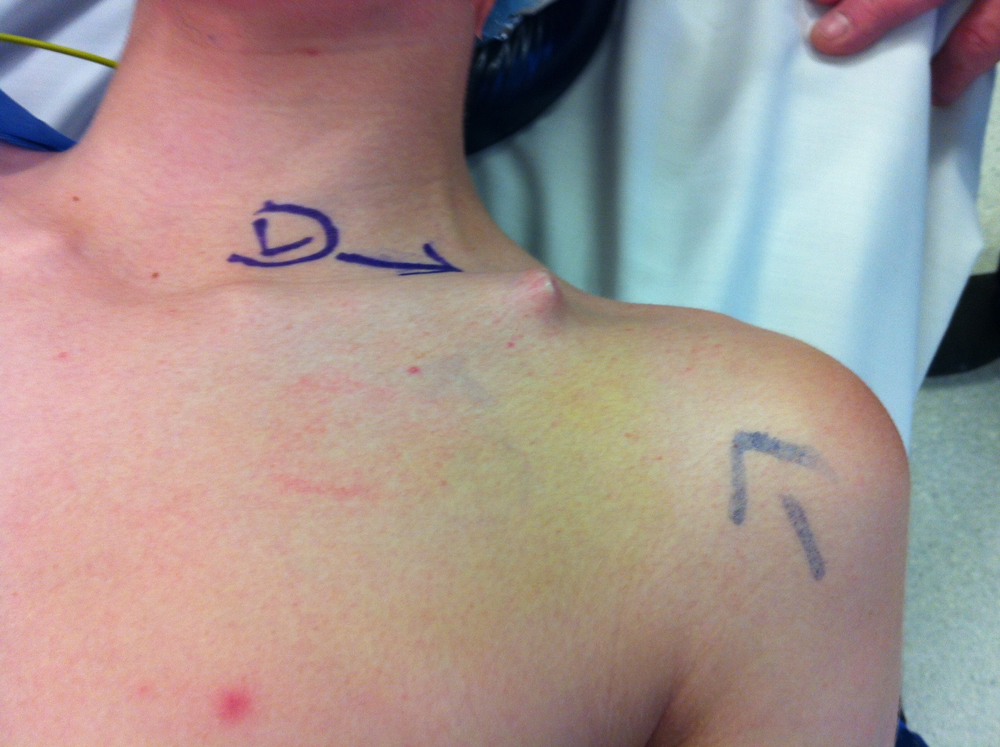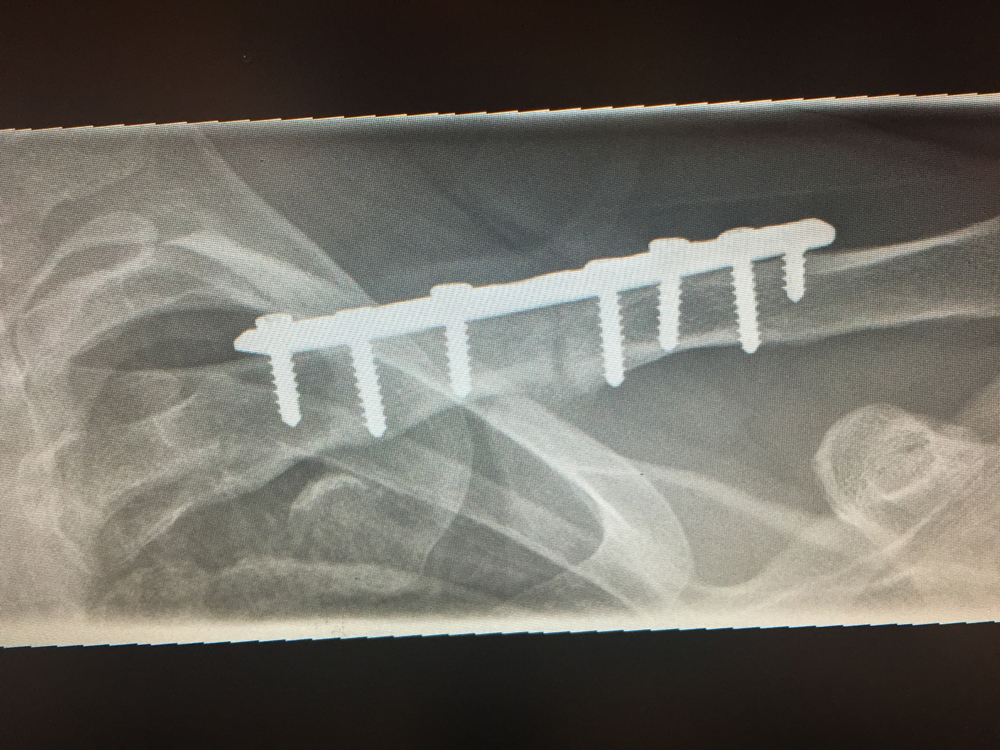
Clavicle Fracture
Fractures are typically a result of a fall onto the shoulder with most occurring in the mid shaft of the bone.
Symptoms are of acute onset pain over the clavicle after an injury. This is associated with tenderness, swelling and bruising in the area of the fracture. Clicking and pain with movement are common for the first week until fracture healing reduces fracture movement.
Diagnosis is made using x-rays but can be supplemented with a CT scan for more complex fractures being considered for surgical repair.
Most of these fractures will heal without surgery even those that are significantly displaced. Treatment is with some form of shoulder support such as a sling for six weeks. Return to sport is usually around three months after injury.
Surgery to realign the fracture is generally for fractures with large displacement, subcutaneous or open fractures and fractures in individuals with high demand of their shoulder ie overhead athletes.
Return to training can start about 2 weeks following surgery on equipment such as a static bike. Running at 6 weeks and non-contact sport specific exercises at 3 months. Return to contact sport requires fracture healing and this is between 3-4 months on average.
Following surgery, the area beneath the incision for several centimetres will have reduced or absent sensation. This is due to the cutaneous nerves which traverse the incision being cut. Although this is permanent it seldom causes a significant problem.
The fracture is typically held reduced by a modern low profile pre-contoured plate. These plates are all palpable under the skin and may cause enough irritation to require removal. Plate removal is done in 10-20% of cases.
Plate removal followed by a return to contact sport is associated with the risk of re-fracture.
While 95% of surgery is uneventful complications may occur. The most dangerous complication is damage to the blood vessels which lie directly beneath the clavicle. This is rare occurring between 1/500-1000 patients. The vessel may have been damaged at the time of the injury and only become apparent at the time of surgery. Damage to a large blood vessel requires emergent vascular repair to prevent permanent injury to the arm or loss of life. Other complications such as infection or nerve injury can occur but are also rare. Not all fractures will heal. There is a 5% chance of the fracture healing being delayed or not occurring at all despite surgery. Smoking is the single biggest risk for a clavicle fracture not healing even after surgery.
“Most of these fractures will heal without surgery even those that are significantly displaced.”
Make an appointment
If you wish to make an appointment to discuss your needs further, please get in touch.

Hermitage Medical Clinic
Old Lucan Road
Dublin 20
Call for appointments: 01 6459562
Telephone: +353 1 645 9000
Fax: +353 1 645 9235
Email: info@johnlunn.ie




